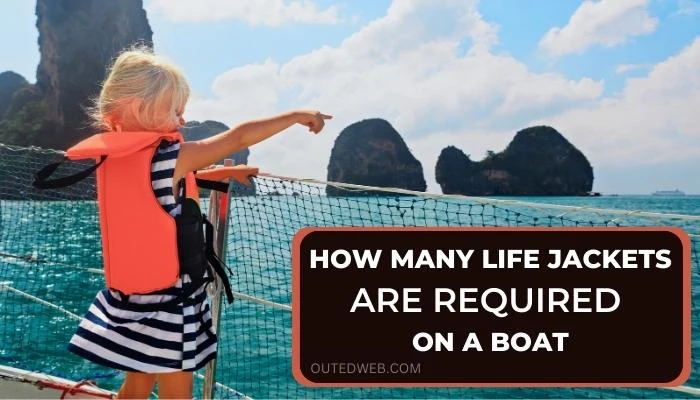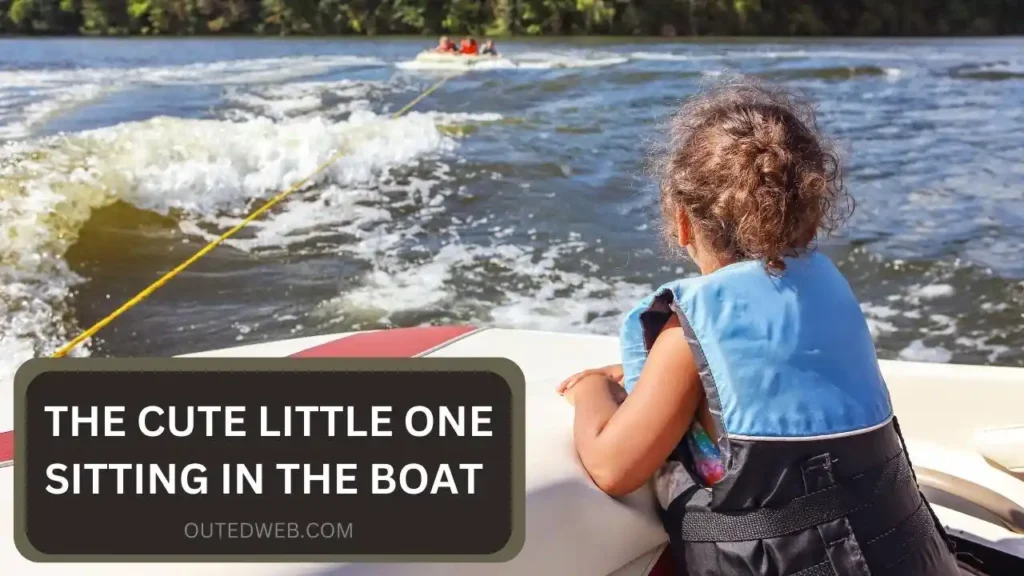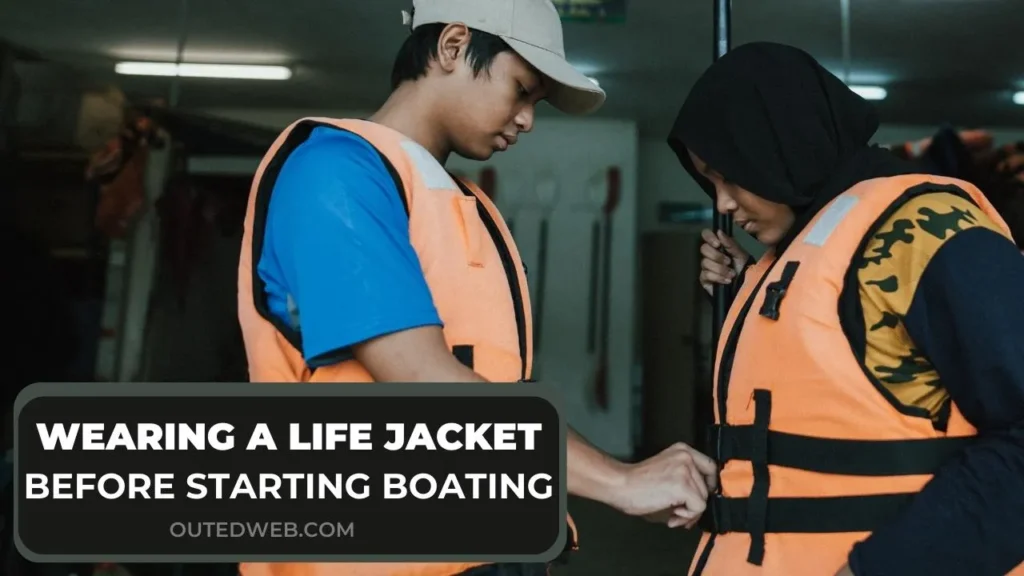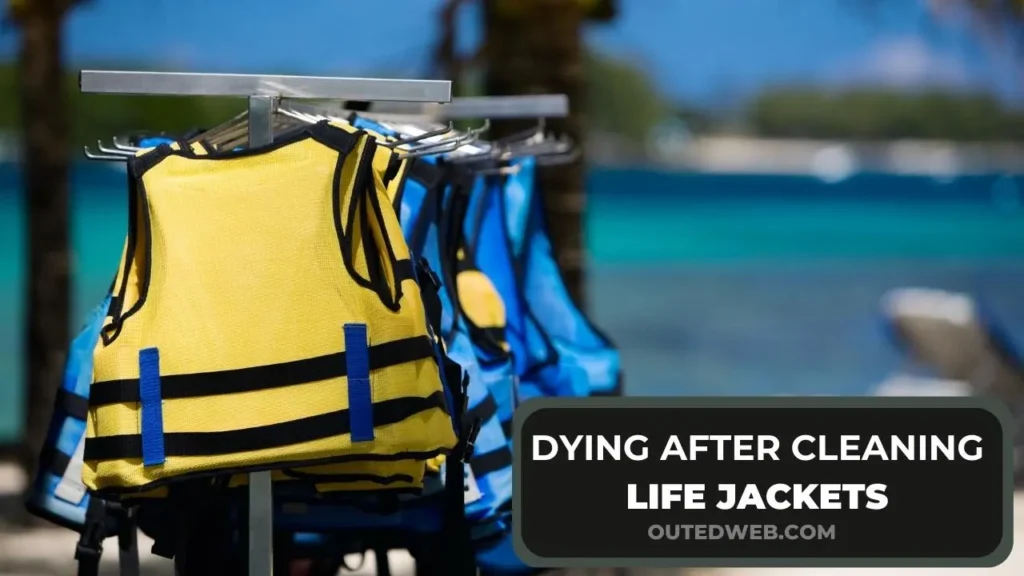Life jackets, also known as personal flotation devices (PFDs), are a crucial safety requirement for boats. Did you know that in the United States, federal law mandates all vessels to carry one U.S. Coast Guard-approved wearable life jacket for each person on board?
But that’s not all; the number of life jackets needed varies based on the boat’s length and the number of passengers, including specific requirements for children under 13.
To ensure your safety on the water, it’s essential to understand the exact life jacket regulations for your vessel. In this article, we’ll dive into the details of how many life jackets are required on a boat, covering the different types, legal requirements, and best practices to keep you and your loved ones secure during your aquatic adventures.

Read Related Articles:
Why are Life Jackets Essential on Boats?
Ladies and gentlemen, let’s discuss life jackets: a crucial boating safety aspect often overlooked. This unassuming yet powerful piece of equipment can mean the difference between life and death in a boating emergency.
So why exactly are life jackets essential on boats? Let’s go into the specifics and examine the significance of these life-saving types of equipment.
Preventing Drowning: The Ultimate Lifesaver
When accidents happen on the water, drowning becomes a real threat. Did you know that according to the U.S. Coast Guard, 79% of boating fatalities in 2020 were due to drowning, and 86% of the victims were not wearing a life jacket?
Life jackets are designed to keep you afloat and your head above water, providing invaluable buoyancy and preventing drowning even if you become unconscious.
The Unpredictable Nature of Emergencies
Now, here’s the thing about emergencies – they are unpredictable and can strike when you least expect them. A sudden storm, a collision, or a mechanical failure can all lead to chaos on the water.
In such high-pressure situations, having life jackets readily available for every person on board ensures everyone has a fighting chance to survive until help arrives.
Safety for All Ages and Abilities
Life jackets are not just for adults; they are necessary for people of all ages and capacities.
A life jacket functions as a personal flotation device, offering a safety net for anybody on board, whether you’re a seasoned boater, a youngster, or someone with weak swimming ability.
Choosing life jackets appropriate for each person’s size and weight is crucial to ensuring optimal protection.
Complying with Regulations and Avoiding Fines
Here’s something you need to know – boating regulations require the presence of life jackets on board.
Each state may have its own specific requirements, but the bottom line is that failing to carry the required number of life jackets can lead to fines and penalties.
Besides, complying with regulations is not just about avoiding legal trouble; it’s about prioritizing the safety of yourself, your loved ones, and others on the water.
Peace of Mind for You and Your Crew
When you’re out on the lake, the last thing you want to consider is everyone’s safety. Having the appropriate amount of life jackets gives you peace of mind, knowing you’re prepared for any circumstance.
It allows you to focus on having fun on the water and having amazing experiences without worrying about anything.
Are there Different Requirements for Different Types of Boats?
Now that we know the importance of life jackets on boats, let’s dig deeper into the regulations and requirements specific to different types of boats, whether you’re on a passenger ship, cargo vessel, or recreational boat.
Knowing the varying guidelines governing the number and type of life jackets needed for optimal safety is crucial. So, let’s explore these different requirements and ensure we’re well-informed.
Passenger Ships: Safety First for All Onboard
When it comes to passenger ships, safety is of the utmost importance. A life jacket must be provided for every person on board, according to maritime laws. This ensures that every passenger can access a life-saving device in an emergency.
Additionally, for passenger ships, there is also a requirement for child life jackets. The rule varies, but it generally involves having a certain percentage of child life jackets based on the number of passengers or having one life jacket for each child.
Cargo Ships: Safety Measures for Crew and Their Families
Cargo ships have their own set of requirements when it comes to life jackets. The focus here is primarily on the crew members and their families who may be onboard.
Cargo ships must have life jackets for all crew members to ensure their safety in emergencies.
Furthermore, if crew members have family members on board, it is critical to supply life jackets for them as well. These measures aim to safeguard everyone involved in the operation of the cargo vessel.
Recreational Vessels: Safety Regulations for Boating Enthusiasts
Now, let’s talk about recreational vessels—the boats many enjoy for leisure activities. The particular requirements for life jackets on recreational boats vary by state; however, there are some basic recommendations to follow.
Typically, the rule of thumb is to have one life jacket per person on board. This ensures that every individual has their flotation device readily available.
However, as the size of the boat rises, so does the minimum number of life jackets necessary. For example, larger boats, typically those measuring 16 feet or longer, may be required to carry additional safety equipment, such as throwable devices and individual life jackets.
Folks, it’s essential to note that compliance with these requirements is not just a matter of following the law; it’s about prioritizing the safety of yourself, your crew, and anyone on board.
Understanding and abiding by the restrictions pertaining to the type of boat you’re driving is critical for a responsible and safe boating experience.
What About Children and Infants?
After discussing the general guidelines for wearing a life jacket on a boat, let’s concentrate on a particular population that needs extra care regarding boating safety: children and infants. It is crucial to ensure their safety; part of doing so is giving them the proper life jackets.
Child Life Jackets: Protecting the Little Ones
When it comes to children, having life jackets that are especially built for their size and weight is critical. These child life jackets are constructed to provide the necessary buoyancy and support to keep them afloat and safe in the water.

The regulations for child life jackets can vary, but a standard guideline is to have a certain percentage of child life jackets based on the total number of passengers on board or at least one life jacket for each child. This ensures children have properly fitted life jackets catering to their unique needs.
Infants and Personal Flotation Devices (PFDs)
Now, when we talk about infants, it’s essential to understand that traditional life jackets may not suit their age and size. Instead, the suggested safety solution for newborns is a personal flotation device (PFD) created exclusively for infants.
These PFDs typically have a collar to support the infant’s head and keep it above water. Choosing a U.S. Coast Guard-approved PFD appropriate for the infant’s weight and size is crucial. Additionally, it’s recommended to always have an adult within arm’s reach when infants are on board, even with a PFD.
Folks, let me emphasize the significance of ensuring that child life jackets and infant PFDs fit correctly. Ill-fitting life jackets can pose a safety risk, so take the time to check and adjust the straps and closures to provide a snug yet comfortable fit. Remember, the goal is to keep our little ones safe on the water.
Ensuring Compliance and Safety Tips
Okay, let’s ensure that laws are followed while providing critical boating safety advice. Adhering to these rules can increase boating safety and make every sailing experience enjoyable.
Check Local Regulations
Each state and nation may have different boating restrictions, including life jacket requirements. It is critical to become acquainted with these regulations and satisfy the minimal requirements.
For the most up-to-date information on life jacket requirements in your region, contact your local maritime authorities or boating agency.
Carry Sufficient Life Jackets
Regardless of the sort of boat you’re on, it’s critical to have enough life jackets for everyone on board.
Ensure the life jackets are in good condition, free from wear and tear, and adequately maintained.
Remember, it’s not just about meeting the minimum requirement; it’s about prioritizing the safety of everyone on board.
Wear Your Life Jacket
Having life jackets on board is one thing, but wearing them is another. Everyone on the boat must wear life jackets to maximize safety, especially in exposed or underway areas.

There may not be enough time in an emergency to locate and put on a life jacket. Wearing it from the start ensures immediate protection and readiness.
Educate Passengers
Educating all passengers on board about the location and proper use of life jackets is essential. Ensure they understand how to correctly secure and adjust the life jacket to its size.
Encourage open communication about safety procedures and emergency protocols, creating a culture of awareness and preparedness on your boat.
Regular Inspections and Maintenance
Life jackets should be inspected regularly to ensure they are in good working condition. Examine the item for signs of wear, such as rips, frayed straps, or broken buckles.
If a life jacket shows signs of wear or is damaged, replace it immediately. Additionally, store the life jackets in a cool, dry place away from direct sunlight to prevent degradation.
Choosing the Right Life Jacket
Now that we know its significance and how to ensure its use and safety while boating, let’s select the best life jacket. Choose a life jacket that fits properly and fulfills your needs for maximum safety on the water.
U.S. Coast Guard Approval
Always look for the U.S. Coast Guard approval label when purchasing a life jacket. This ensures that the life jacket meets the necessary safety standards and requirements. The label will indicate the water conditions and activities suitable for the life jacket, such as inland waters, near-shore, or offshore.
Proper Fit and Buoyancy
A properly fitting life jacket is crucial for effective buoyancy and overall safety. When trying on a life jacket, ensure it feels snug but tight. Adjust the straps and closures to ensure a secure fit.
Different sizes and styles are available, so choose one that suits your body size and type. The life jacket should provide enough buoyancy to keep your head above water and support your body in a floating position.
Consider the Activity
The type of boating activity you engage in should also influence your choice of a life jacket. Different life jacket designs exist for various water activities such as kayaking, fishing, or waterskiing.
These activity-specific life jackets often provide additional features such as pockets for gear storage, mesh panels for breathability, or high-visibility colors for increased safety.
Comfort and Mobility
Comfort and mobility are key factors when selecting a life jacket. Look for adjustable straps and panels that allow freedom of movement, particularly around the arms and shoulders.
It’s important to feel comfortable wearing the life jacket for extended periods without hindering your ability to perform tasks or enjoy recreational activities.
Additional Features
Some life jackets have additional features that enhance safety and convenience.
These may include reflective tape for improved visibility, whistles for signaling, or inflatable options for reduced bulk and increased mobility.
Consider your specific needs and preferences when evaluating these additional features.
Different Types of Life Jackets for Boats
Life jackets or vests come in various styles and are necessary for every boat journey. Selecting the appropriate life jacket for your boating activity is crucial to ensuring your safety and adhering to the rules. The top boat life vests and life jackets are listed in this article so that you can pick the best one.
Maintaining and Storing Life Jackets
Knowing how to get the best life jacket is critical, but it’s equally crucial to understand how to care for and preserve them. Life jackets are necessary safety gear aboard boats, and maintaining them properly guarantees that they will function well in an emergency.
Regular Inspections
Check your life jackets frequently for any signs of wear and damage. Verify the material for any tears, punctures, or frayed straps. Ensure every closure, zipper, and buckle are in good functioning order. It’s critical to repair or replace the life jacket right away if you notice any damage.
Cleaning
To prevent fabric degradation and reduced buoyancy, clean your life jackets frequently to get rid of dirt, salt, and other debris. Because different materials may call for different cleaning procedures, always abide by the manufacturer’s directions when cleaning.
It is typically advised to wash hands gently with fresh water and a light detergent. Prevent damaging the cloth by avoiding using bleach or strong chemicals.
Drying
After cleaning, allow your life jackets to dry thoroughly before storing them. Hang them somewhere well-ventilated and out of direct sunshine. Avoid using artificial heat sources, as excessive heat can cause damage to the fabric and materials. Ensure the life jackets are completely dry to prevent mold or mildew growth.

Storage
Proper storage is essential to maintain the integrity of your life jackets. Store them in a cool, dry place protected from extreme temperatures, moisture, and sunlight.
Avoid storing them in tightly packed areas or under heavy objects that could deform the shape of the life jackets. Consider using a dedicated storage bag or container to keep them organized and easily accessible when needed.
Regular Replacements
Over time, life jackets may lose buoyancy or become less effective. It’s essential to regularly assess the condition of your life jackets and consider replacing them if they no longer meet safety standards or show signs of deterioration. Follow the manufacturer’s guidelines for the recommended lifespan of your life jackets.
Final Say
Throughout this exploration of boating safety, we’ve emphasized the importance of life jackets and the need to comply with regulations and prioritize safety on the water.
Life jackets are essential safety equipment that can save lives in emergencies. By ensuring compliance, choosing the right life jacket, and adequately maintaining and storing them, we enhance our safety and the safety of everyone on board.
Remember, boating safety is a responsibility we all share. Educating ourselves and others about the importance of wearing life jackets, especially for children and infants who require specialized jackets, is crucial.
By following local regulations, conducting regular inspections, and taking the necessary precautions, we can enjoy our boating adventures with peace of mind.
So, the next time you go boating, remember to wear your life jacket, keep a tight watch on your loved ones, and emphasize safety. Let’s make every boating experience safe and enjoyable. Stay safe out there!

